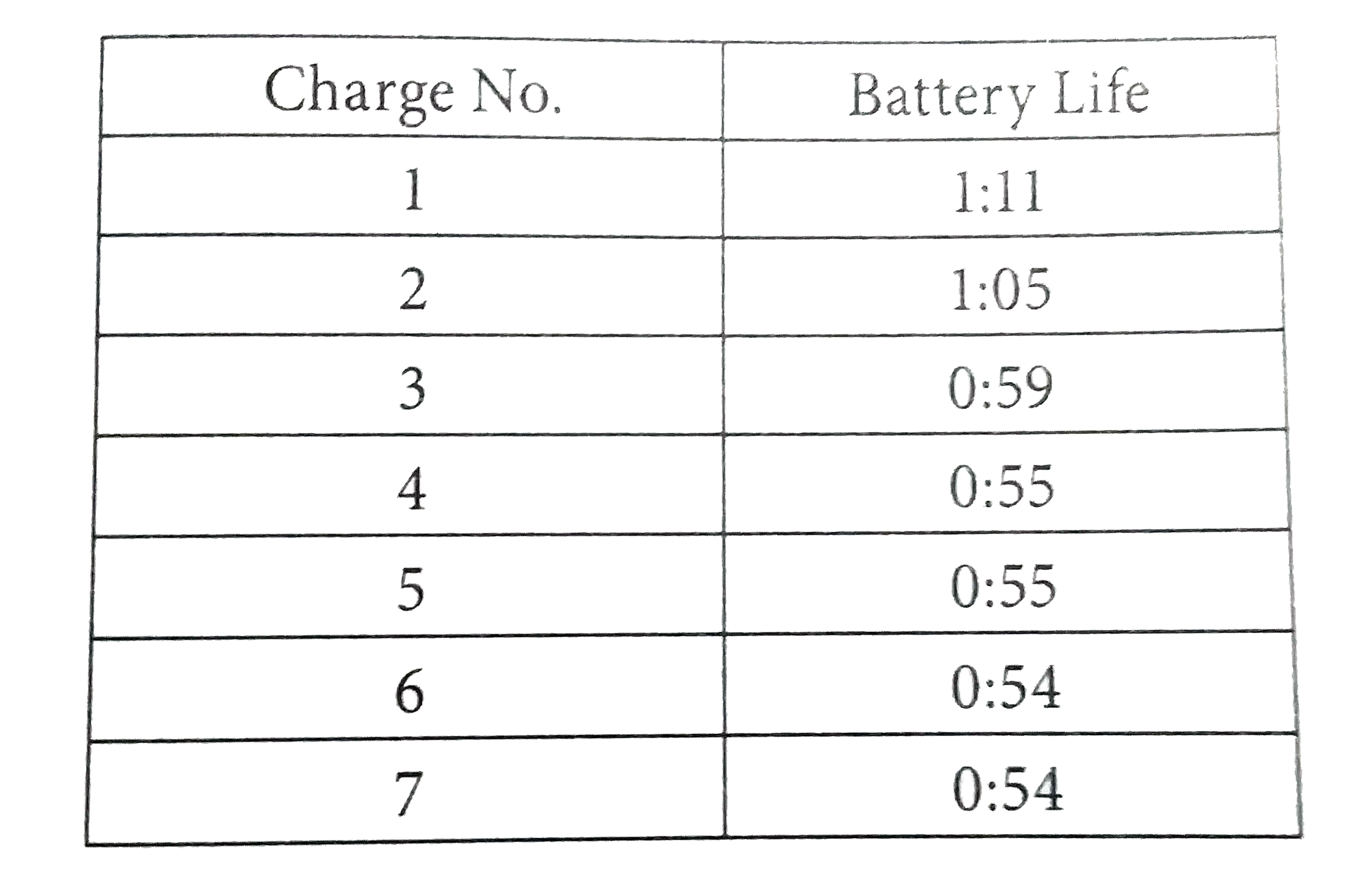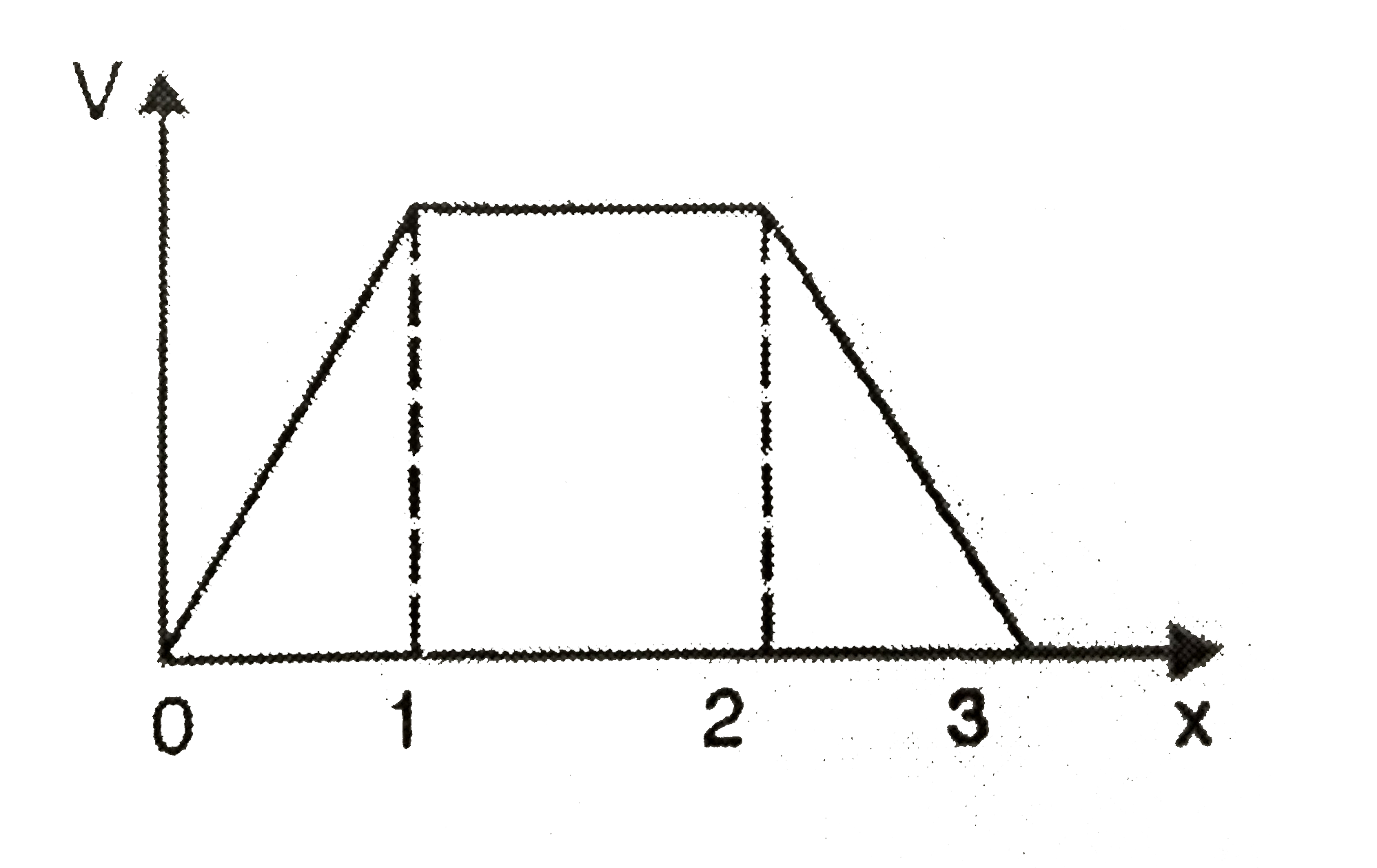
Xia is charging her laptop. She records the battery charge for the first 30 minutes after she plugs it in to get an idea of when it will be completely charged. The table above shows the results. If y is the percent battery charge on Xia's laptop, which linear equation represents the correct relationship between y and x ?
y=1.5x+19
y=2x+14
y=2.5x+9
y=10x+34
The correct Answer is:A
The equatin tells you that the relationship is linear, so start by finding the rate of change (the slop, m) using any two pairs of values from the table and the slope formula. Next substitute the slope and any pair of values from the talbe , such as (10,34), into the equation y=mx+b and solve for b. Finally, use the values of m ans b to write the function.
m=y2−y1x2−x1=64−3430−10=1.5
You can stop right there! Only (A) has a slope of 1.5, so it mus be the correct answer. For the record :
34=10(1.5)+b
34=15+b
19=b
Topper's Solved these Questions
- BOOK - KAPLANCHAPTER - LINEAR EQUATIONS AND GRAPHSEXERCISE - SOLVING EQUATIONS1videos
LINEAR EQUATIONS AND GRAPHS
- BOOK - KAPLANCHAPTER - LINEAR EQUATIONS AND GRAPHSEXERCISE - WORD PROBLEMS1videos
LINEAR EQUATIONS AND GRAPHS
- BOOK - KAPLANCHAPTER - LINEAR EQUATIONS AND GRAPHSEXERCISE - LINEAR GRAPH1videos
LINEAR EQUATIONS AND GRAPHS
- BOOK - KAPLANCHAPTER - INEQUALITIESEXERCISE - MODELING REAL-LIFE SITUATIONS WITH INEQUALITIES1videos
INEQUALITIES
- BOOK - KAPLANCHAPTER - PAIRED PASSAGES AND PRIMARY SOURCE PASSAGES EXERCISE - HOW MUCH HAVE YOU LEARNED11videos
PAIRED PASSAGES AND PRIMARY SOURCE PASSAGES
Similar Questions

Some values of x and their corresponding values of y are shown in the table above, where a is a constant. If there is a linear relationship between x and y, which of the following equations represents the relationship?View SolutionA lending library has a fixed charge for the first three days and an additional chargefor each day thereafter. Aarushi paid Rs 27 for a book kept for seven days. If fixed charges are Rs x and per day charges are Rs y. Write the linear equation representing the abvoe information.
View Solution
Knowledge Check
- Question 1 - Select One
Vera is on her school's track and field term. In a partice long-jump competition against her temmates, she gets 5 points for landing over the nearer line and 10 points for landing over the more distant line. She gets a total of 7 jumps and lands x times over the more distant line and the rest of the times over the nearer line. Which of the following equations represents the relationship between Vara's total score, y, and the number of times she lands over the more distant line, x ?
Ay=10xBy=5x+35Cy=10x+5Dy=70−5x - Question 2 - Select One

A toy drone is opened and charged to full battery life. The table above shows the duration of the battery life in hours and minutes between charges. What is the average battery life for the first five charges?A55 minutesB58 minutesC1 hour and 1 minuteD1 hour and 5 minutes
The internal resistance of an accumulator battery of emf 6V is 10(Ω)when it is fully discharged,As the battery gets charged up.its internal resistance decreases to 1(Ω)The battery in its completely discharged state is connected to a charger which maintains a constant potential difference of 9 V.Find the current through the battery (a)just after the connections are made and (b) after a long time when it is completely charged.
View SolutionA three-wheeler scooter charges 15 for first kilometer and 8 each for every subsequent kilometer. For a distance of x km, an amount of y is paid. Write the equation representing the above information
View SolutionAnswer the following:
(a) When a parallel plate capacitor is connected across a dc battery, explain briefly how the capacitor gets charged.
(b) A parallel plate capacitor of capacitance 'C' is charged to 'V' volt by a battery. After some time the battery is disconnected and the distance between the plates is doubled. Now a slab of dielectric constant 1<k<2 is introduced to fill the space between the plates. How will the following be affected ?
(i) The electric field between the plates of the capacitor.
(ii) The energy stored in the capacitor. Justify your answer in each case.
(c) The electric potential as a function of distance 'x' is shown in the figure. Draw a graph of the electric field E as a function of x.
 View Solution
View SolutionWhen an atom or an ion is missing from its nomal lattice site a lattice vacanecy (Schottky defect) is created. In stoichmeteric ionic crystals, a vacancy of one ion has to be accompanied by the vacancy of the oppositely charge ion in order to maintain electrical neutrality.
In a Frenkel defect an ion leaves its position in the lattice and occupies an interstitial void. This id the Frenkel defect commonly found along with the Schottky defects and interstitial. In pure alkali halides. Frenked defects are not found since the ions cannot get into the interstitial sites. Frenkel defects are found in silver halides because of the small size of the Ag+ ion. Unike Schottky defects, Frenkel defect do not change the density of the solids. in certain ionic solids (e.g., AgBr) both schottky and Frenkel defect occur.
The Defects idiscussed above do not disturb the stoichiometery of the crystalline material. there is large variety of non-stoichiometric inorganic solids which contains an excess or deficienty of one of the elements. Such solids showing deviations from the ideal stoichiometric composition from an important group of solids. For example in the vanadium oxide, VOx,x can be anywehere between 0.6 and 1.3 there are solids such as difficult to prepare in the soichiometric omposition thus, the ideal composition in compounds such as FeO is difficult to obtain (normally we get a compositiion of Fe(0.95)O but it may range from Fe0.93O to Fe0.96O). Non-stoichiometric behavious is most commonly found for transition metal compounds through is also known for some lathanoids and actinoids.
Zinc oxide loses oxygen reversible at high temperature and turns yellow in colour. the excess metal is accomodated interstitial, giving rise to electrons trapped in the neighbourhood, the enchanced electrical conductivity of the non-stoichiometric ZnO arises from these electrons.
Anion vacancies in alkali halides are produced by heating the alkali halid crystals in an atmosphere of the alkali metal vapour. when the metal atoms deposit on the surface they diffuse into the cystal and after ionisation the alkali metal ion occupies cationic vacancy whereas electron occupies anionic vacancy. Electrons trapped i anion vacancies are referred to as F-centers (From Farbe the German word for colouf) that gives rise to interesting colour in alkali halides. Thus, the excess of potassium i KCl makes the crystal appear violet and the excess of lithium in LiCl makes it pink.
Which of the following is most appropritate crystal to show Frenkel defect ?View SolutionWhen an atom or an ion is missing from its normal lattice site, a lattice vacancy (Schottky defect) is created. In stoichimetric ionic crystals, a vacancy of one ion has to be accompanied by the vacancy of the oppositely charged ion in order to maintain electrical neutrality.
In a Frenkel defect an ion leaves its position in the lattice and occupies an interstitial void. This is the Frenkel defect commonly found along with the Schottky defects and interstitials. In pure alkali halides, Frenkel defects are not found since the ions cannot get into the interstitial sites. Frenkel defects are found in silver halides because of the small size of the Ag+ion. Unlike Schottky defects, Frenkel defects do not change the denstiy of the solids. In certain ionic solids (e.q. AgBr) both Schottky and Frenkel defects occur.
The defects discussed above do not disturb the stoichiometry of the crystalline material. There is large variety of non-stoichiomertic inorganic solids which contain an excess or deficiency of one of the elements. Such solids showing deviations from the ideal stoichiometric composition from an inmportant group of solids. For example in the vanadium oxide, VOx, x can be anywhere between 0.6 and 1.3. There are solids which are difficult to prepare in the stoichiometric composition. Thus, the ideal composition in compounds such as FeO is difficult to obtain (normally we get a composition of Fe0.95O but it may range from Fe0.93O to Fe0.96O). Non-stoichiometric behaviour is most commonly found for transition metal compounds though is also known for some lanthanoids and actinoids.
Zinc oxide loses oxygen reversibly at high temperature and turns yellow in colour. The excess metal is accommodated interstitially, giving rise to electrons trapped in the neighbourhood. The enhanced electrical conductivity of the non-stoichiometric ZnO arises from these electrons.ltrbgt Anion vacancies in alkali halides are produced by heating the alkali halide crystals in an atmosphere of the alkali metal vapur. When the metal atoms deposit on the surface they diffuse into the crystal and after ionisation the alkali metal ion occupies cationic vacancy whereas electron occupies anionic vacancy. Electrons trapped in anion vacancies are referred to as F-centers (from Farbe the German word for colour) that given rise to interesting colour in alkali halides. Thus, the excess of potassium in KCl makes the crytal appear violet and the excess of lithium in LiCl makes it pink.
When LiCl is heated into the vapour of lithium, the crystal acquires pink colour. This is due toView SolutionWhen an atom or an ion is missing from its normal lattice site, a lattice vacancy (Schottky defect) is created. In stoichimetric ionic crystals, a vacancy of one ion has to be accompanied by the vacancy of the oppositely charged ion in order to maintain electrical neutrality.
In a Frenkel defect an ion leaves its position in the lattice and occupies an interstitial void. This is the Frenkel defect commonly found along with the Schottky defects and interstitials. In pure alkali halides, Frenkel defects are not found since the ions cannot get into the interstitial sites. Frenkel defects are found in silver halides because of the small size of the Ag+ion. Unlike Schottky defects, Frenkel defects do not change the denstiy of the solids. In certain ionic solids (e.q. AgBr) both Schottky and Frenkel defects occur.
The defects discussed above do not disturb the stoichiometry of the crystalline material. There is large variety of non-stoichiomertic inorganic solids which contain an excess or deficiency of one of the elements. Such solids showing deviations from the ideal stoichiometric composition from an inmportant group of solids. For example in the vanadium oxide, VOx, x can be anywhere between 0.6 and 1.3. There are solids which are difficult to prepare in the stoichiometric composition. Thus, the ideal composition in compounds such as FeO is difficult to obtain (normally we get a composition of Fe0.95O but it may range from Fe0.93O to Fe0.96O). Non-stoichiometric behaviour is most commonly found for transition metal compounds though is also known for some lanthanoids and actinoids.
Zinc oxide loses oxygen reversibly at high temperature and turns yellow in colour. The excess metal is accommodated interstitially, giving rise to electrons trapped in the neighbourhood. The enhanced electrical conductivity of the non-stoichiometric ZnO arises from these electrons.ltrbgt Anion vacancies in alkali halides are produced by heating the alkali halide crystals in an atmosphere of the alkali metal vapur. When the metal atoms deposit on the surface they diffuse into the crystal and after ionisation the alkali metal ion occupies cationic vacancy whereas electron occupies anionic vacancy. Electrons trapped in anion vacancies are referred to as F-centers (from Farbe the German word for colour) that given rise to interesting colour in alkali halides. Thus, the excess of potassium in KCl makes the crytal appear violet and the excess of lithium in LiCl makes it pink.
Stongly heated ZnO crystal can conduct electricity. This is due toView Solution

